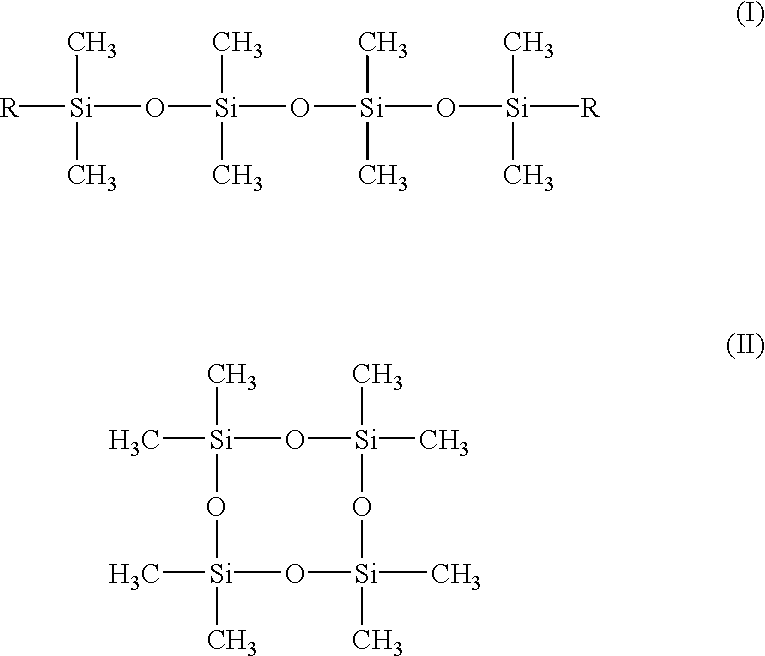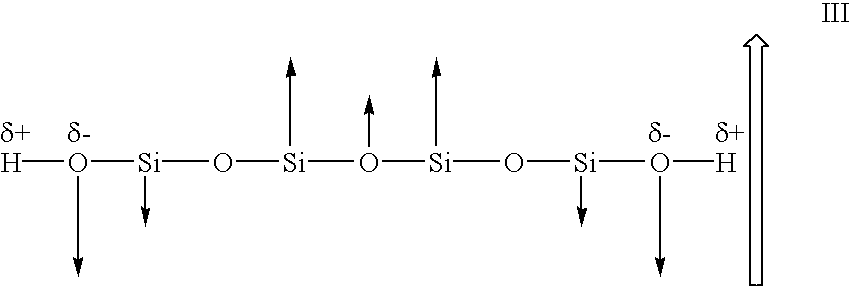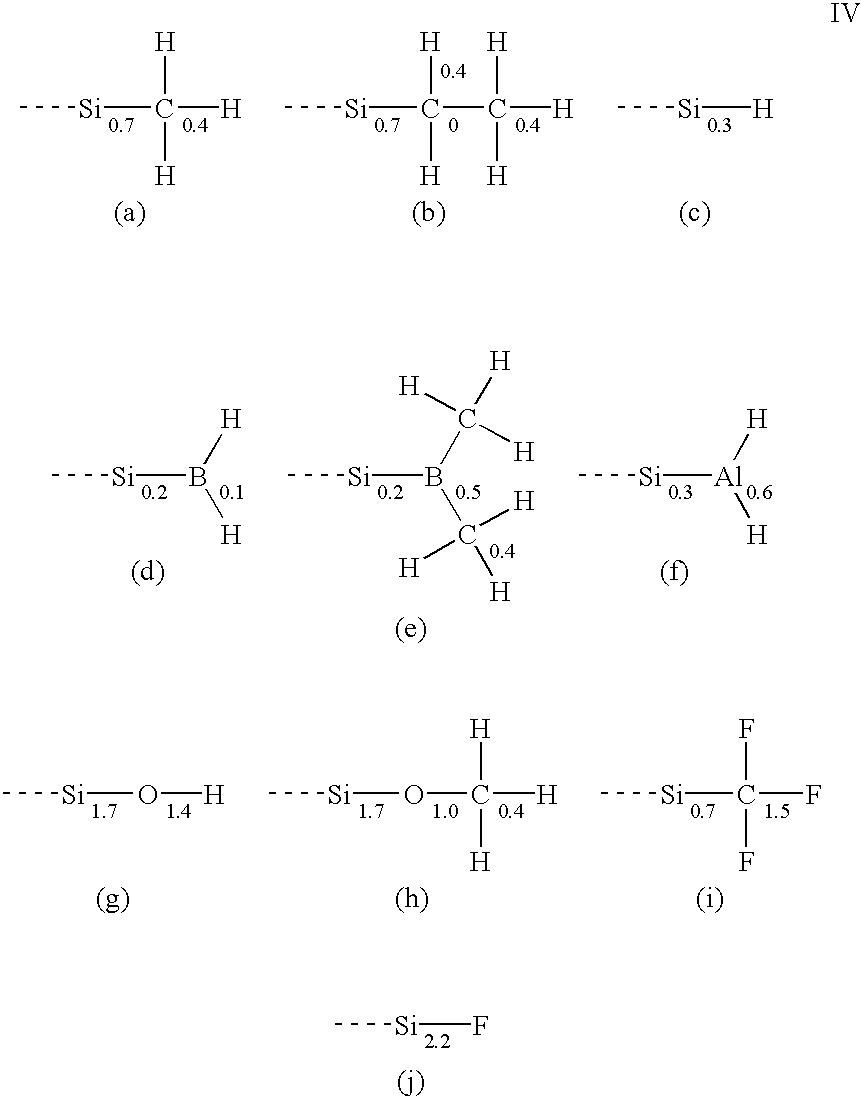Low dielectric constant materials and their production and use
a dielectric constant and low technology, applied in the field of low dielectric constant materials and their production and use, can solve the problems of poor heat resistance, increased f content of higher moisture absorption, and increasing the problem of signal delay, and achieve the effect of low moisture absorption
- Summary
- Abstract
- Description
- Claims
- Application Information
AI Technical Summary
Benefits of technology
Problems solved by technology
Method used
Image
Examples
example 2
Tetraethyl orthotitanate that had been reacted beforehand with ethyl acetoacetate, and methyltriethoxysilane and isobutyltriethoxysilane were mixed in a molar ratio of 1:1:5 in an ethanol solvent. After mixing, the mixture was hydrolyzed in a 10-fold molar amount of water with respect to the tetraethyl orthotitanate. This adjusted solution was spin-coated onto an Si wafer bearing platinum as a lower electrode for electric capacity measurement and onto an Si wafer for FT-IR measurement to form films thereon, after which they were dried for one minute each on hot plates set to temperatures of 70.degree. C., 150.degree. C. and 200.degree. C., in that order. Heat treatment was then carried out for 50 minutes at 450.degree. C. in a nitrogen atmosphere using an infrared furnace.
The FT-IR spectra revealed a structure with methyl groups and isobutyl groups in each SiO.sub.2 film prior to the heat treatment at 450.degree. C., but after the heat treatment showed a structure wherein the isobut...
examples 3-6
were fabricated with dimethyldiethoxysilane and the metal alkoxides listed in Table 2 as the starting materials. The ratio of the metal alkoxide to the dimethyldiethoxysilane was 1:10 in Example 3, 1:5 in Example 4, 1:10 in Example 5 and 1:20 in Example 6. These were stirred in an ethanol solvent, and a solution of water in ethanol was added for hydrolysis to prepare a sol. The resulting sol was poured into an aluminum dish and subjected to two-stage heat treatment at 70.degree. C. and 150.degree. C. to fabricate a bulk material. The dynamic viscoelasticity of the bulk material was measured under conditions of room temperature, 110 Hz frequency to determine the storage elastic modulus. An electrode was also connected to both sides of the bulk material to measure the dielectric constant at a frequency of 1 MHz.
Comparative Examples 2-5 were fabricated with a siloxane polymer represented by HO--[Si(CH.sub.3).sub.2 --O].sub.40 --H and the metal alkoxides listed in Table 2 as the startin...
examples 1-6
Calculation Examples 1-6 and Calculation Example 7 are examples where the dielectric constants of materials were calculated according to Equation 1, based on the polarizabilities of the model molecules shown in Table 3.
The proportion of the end-containing portions to end-free portions (for example, ring structures) among all of the polymer chains composing each material is designated as x:(1-x), (0.ltoreq.x.ltoreq.1). The proportion of molecules with end structures of --O--Si(CH.sub.3).sub.2 R (R is a group other than OH) to those with -O--Si(CH.sub.3).sub.2 OH is designated as y:(1-y), (0.ltoreq.y.ltoreq.1). Thus, Equation 1 is represented by: ##EQU3##
Here, .alpha..sub.R is the polarizability of linear molecules wherein the end groups R shown in FIG. 8 are not OH, .alpha..sub.OH is the polarizability particularly where the end groups are OH, .alpha.' is the polarizability of the ringed molecules shown in FIG. 8, and W.sub.R, W.sub.OH and W' are the molecular weights of their model ...
PUM
| Property | Measurement | Unit |
|---|---|---|
| size | aaaaa | aaaaa |
| molar ratio | aaaaa | aaaaa |
| molar ratio | aaaaa | aaaaa |
Abstract
Description
Claims
Application Information
 Login to View More
Login to View More - R&D
- Intellectual Property
- Life Sciences
- Materials
- Tech Scout
- Unparalleled Data Quality
- Higher Quality Content
- 60% Fewer Hallucinations
Browse by: Latest US Patents, China's latest patents, Technical Efficacy Thesaurus, Application Domain, Technology Topic, Popular Technical Reports.
© 2025 PatSnap. All rights reserved.Legal|Privacy policy|Modern Slavery Act Transparency Statement|Sitemap|About US| Contact US: help@patsnap.com



